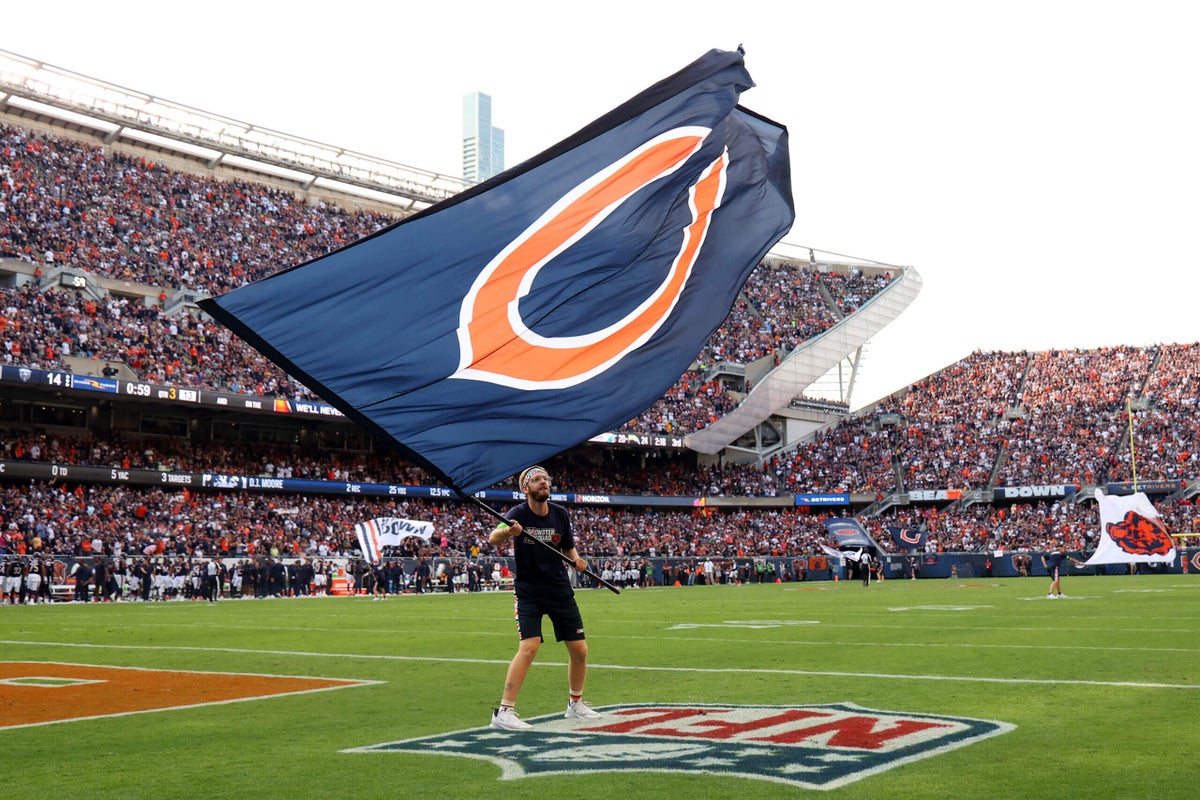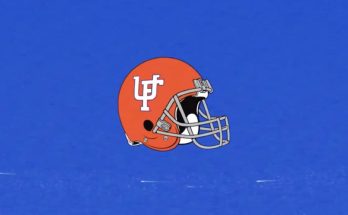Downtown is still open as the Bears concentrate on building a new stadium in Arlington Heights, according to The Athletic.
The Chicago Bears, one of the most storied franchises in NFL history, are at a crossroads. For decades, Soldier Field, located along the city’s lakefront, has been the team’s home. But in recent years, the Bears have signaled that they may be looking to move, and their future home could be in Arlington Heights, a suburban community about 25 miles northwest of downtown Chicago. At the same time, however, the Bears have not completely abandoned the idea of staying in Chicago, proposing a new stadium project on the lakefront as part of an ambitious revitalization plan.
As this high-stakes decision unfolds, it’s not just about football. The future of the Bears’ stadium could reshape the city’s landscape, impact local economies, and alter the Bears’ relationship with their loyal fanbase. Let’s dive into the details of these two potential futures for the Bears: the suburban dream of Arlington Heights and the revitalized cityscape of downtown Chicago.
Arlington Heights: The Suburban Dream
In 2021, the Chicago Bears made a bold move when they purchased a 326-acre property in Arlington Heights. The purchase signified a serious commitment to exploring a new stadium in the suburbs, an area that could offer a modern facility with ample space for expansion. Arlington Heights, known for its suburban charm and proximity to major highways, presented a compelling case for the Bears. This would allow them to design a stadium from the ground up, surrounded by parking, entertainment options, and commercial developments, transforming the area into a year-round destination.
But as with many ambitious projects, the journey has not been without hurdles. Among the primary challenges have been disputes over property taxes and difficulties in negotiating public funding for the project. Local officials and residents have raised concerns about the potential impact of the stadium on the community, including traffic, noise, and the strain on local infrastructure. As such, the Bears’ new stadium plan in Arlington Heights has been in flux, requiring careful consideration of how the team could balance financial considerations with community needs.
Despite these setbacks, the Bears remain committed to the idea of developing a new home in Arlington Heights. In recent statements, team president Kevin Warren emphasized the advantages of the location, highlighting its accessibility and the potential for a vibrant entertainment district to complement the stadium. He also acknowledged the importance of working closely with local stakeholders to ensure that the development aligns with the community’s interests. This includes conversations around how best to handle concerns about local taxes, transportation infrastructure, and public services.
For the Bears, the Arlington Heights project remains attractive because it offers more space for development and greater flexibility. If approved, the stadium could become the centerpiece of a sprawling sports and entertainment complex, potentially attracting thousands of visitors each year, boosting local businesses, and creating jobs. While the road to realizing this vision remains uncertain, it’s clear that the Bears are not ready to abandon their plans for a suburban home.
Downtown Chicago: A Vision for the Lakefront
At the same time, the Bears have not turned their back on downtown Chicago. In fact, the team has been working with the city to explore the possibility of constructing a new stadium as part of a broader plan to revitalize the lakefront area around Soldier Field. This proposal, dubbed the Burnham Park Project, includes a state-of-the-art stadium with a fixed roof, which would sit just south of the current Soldier Field.
Unlike Arlington Heights, which offers ample space for expansion and development, downtown Chicago’s challenges are more about density and land use. A new stadium would need to fit into an already crowded area, with limited space for parking and surrounding developments. However, the potential benefits of a downtown location are significant. The Bears’ current home at Soldier Field is a historic landmark, and a new stadium on the lakefront would maintain the team’s connection to the city’s rich cultural and sports history.
The Burnham Park Project seeks to create more than just a new stadium—it envisions a year-round destination that would offer expanded green spaces, recreational facilities, and cultural amenities to benefit both residents and visitors. The proposal also includes plans to improve transportation infrastructure, making it easier for fans to access the stadium via public transit or new roadways. Furthermore, the project aims to preserve Soldier Field’s iconic colonnades, which have been part of Chicago’s skyline for over a century, blending the old with the new.
Bears Chairman George H. McCaskey has repeatedly emphasized that the team’s commitment to Chicago is unwavering. The downtown project represents an investment in the city’s future, creating a space that benefits not just the Bears but the community as a whole. The new stadium would also provide a significant boost to the city’s tourism and economy, potentially drawing thousands of visitors for both games and non-sporting events.
However, the downtown proposal also has its challenges. The cost of redevelopment would be high, and while the city has expressed interest in partnering with the Bears, there are concerns about funding. Some critics worry that the project could result in the privatization of public spaces, with the city footing much of the bill. Additionally, the dense urban environment surrounding Soldier Field raises logistical questions—such as how to manage traffic flow and provide enough parking for tens of thousands of fans.
A Battle Between Tradition and Innovation
The choice between Arlington Heights and downtown Chicago represents a broader struggle between tradition and innovation. On one hand, the Bears are deeply rooted in the city of Chicago. Soldier Field, despite its flaws, is a historic site, and the team’s long-standing connection to the city’s fans is part of what makes the Bears such an integral part of Chicago’s identity. The downtown proposal would allow the Bears to remain part of the city’s fabric, building a modern, cutting-edge facility while revitalizing the surrounding area.
On the other hand, the opportunity to build a new stadium from the ground up in Arlington Heights offers the Bears the flexibility to design a world-class facility without the constraints of the city’s infrastructure. The Arlington Heights project could include not just a football stadium but also hotels, restaurants, retail outlets, and even housing, creating a vibrant, multi-use development that could serve as a major economic engine for the region.
Ultimately, the Bears will need to balance their desire for a modern, state-of-the-art stadium with their commitment to their long-standing fanbase and the city of Chicago. Both options have distinct advantages, and neither is without its challenges. The question of which direction the Bears will ultimately choose will shape the team’s future for decades to come.
Community and Economic Impact
The potential relocation of the Bears to Arlington Heights has already sparked considerable debate within the community. Proponents argue that the stadium would bring significant economic benefits to the area, including job creation and an influx of visitors to the region. The development could become a hub for entertainment, attracting fans not just for football games but for concerts, conventions, and other events throughout the year.
However, the project’s critics are concerned about the impact on property taxes, local services, and infrastructure. Some fear that the new stadium would place a strain on Arlington Heights’ public resources, with increased traffic and pressure on schools, roads, and emergency services. There are also concerns about the environmental impact of such a large development, especially if it requires significant changes to the surrounding area.
Similarly, the downtown Chicago proposal has raised questions about the affordability of redevelopment and whether the public sector should bear the burden of financing the project. Some local residents worry that a new stadium in the heart of the city could lead to gentrification, displacing lower-income families and further driving up the cost of living in the area. While the Bears have emphasized their desire to create a space that benefits everyone, the cost of such a monumental undertaking could be a sticking point for many.
A Decision That Will Shape the Future
The Bears are at a critical juncture in their history. The decision of whether to build a new stadium in Arlington Heights or downtown Chicago will have profound implications not just for the team, but for the city and surrounding areas as well. Whether in the suburbs or the city, the new stadium will be a testament to the Bears’ commitment to innovation and excellence.
For fans, the future of the Bears’ home represents much more than just a stadium—it’s a symbol of the team’s legacy, its connection to the community, and its ambitions for the future. The Bears have a unique opportunity to build a new chapter in their history, one that embraces both tradition and modernity, and the outcome of this decision will undoubtedly shape the team’s future for years to come.



